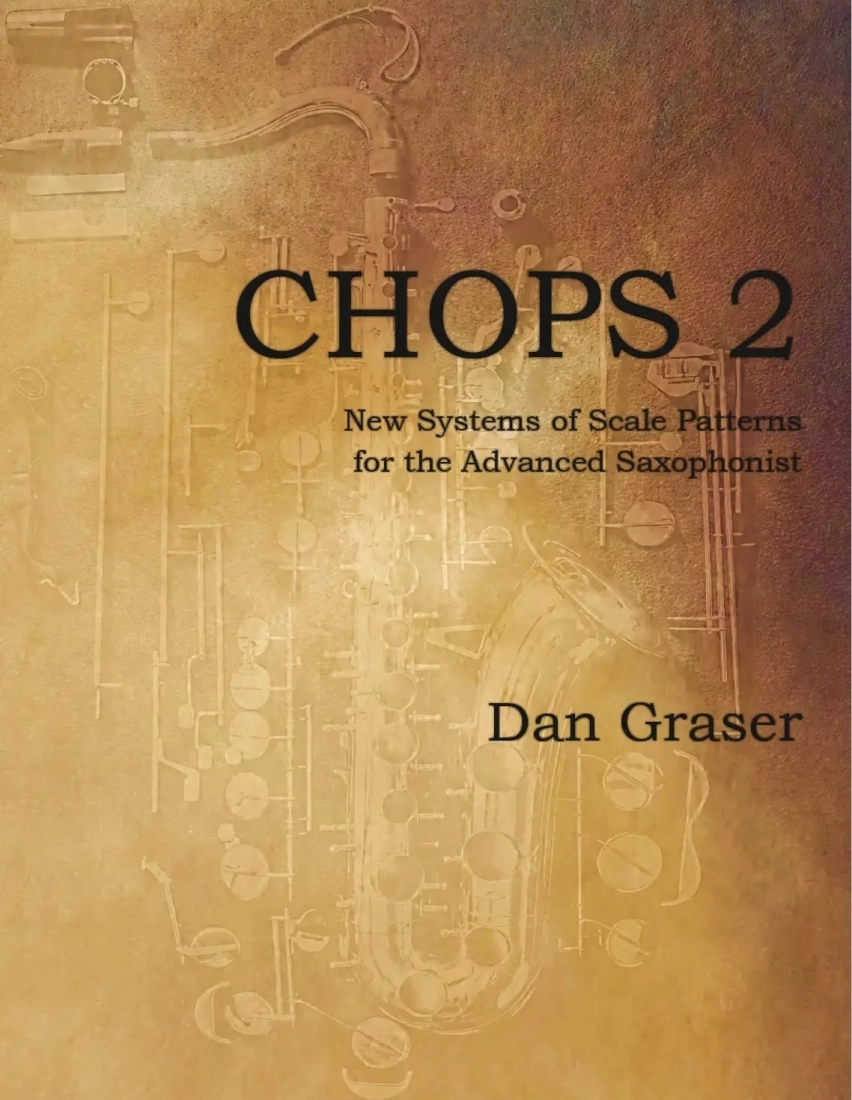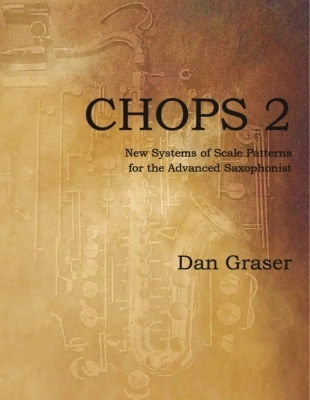Opens in a new window
Conway Publications CHOPS 2: New Systems of Scale Patterns for the Advanced Saxophonist - Graser - Saxophone - Book

- Composer/Author: GRASER, DAN
- Instrumentation: SAXOPHONE
- Model # 9781955697002
Format: Book
Instrumentation: Saxophone
CHOPS 2 continues the mission to modernize the existing pedagogical materials available for saxophone by providing a thorough collection of pattern work. When I set out to write the first volume of CHOPS, I was looking to reassess and update the fundamentals of every facet of saxophone playing for the advancing student, from basic long tones through advanced articulation and technique. In that first volume, I included updated "full range" scales, as well as one example of a scale pattern. Here in this second volume, I want to provide a fun, intellectually stimulating, and musically useful course of pattern work for many types of scale formulations.
In this volume the focus is on a fundamental area that we have all been practicing since we first began the instrument. However, it has been my observation that the way we practice these very rarely develops to the level of the rest of our practice on both an intellectual and a musical level. Even the most advanced students often practice their scales in the same form and manner as their earliest study and focus merely on speed and dexterity as the ONLY goal as opposed to just being one possible goal. While we all understand that scale practice is necessary, what exactly it is you should be accomplishing by practicing them is not always clear. In this volume -- using the range of the modern saxophonist -- the advancing student will find many new ways to effectively develop their scale practice into a means to develop several fundamental areas at once and connect this practice meaningfully to other fundamentals, etudes, and repertoire.
Working with patterns is hardly a new concept when it comes to the area of woodwind performance. For generations there have been patterns and scale-forms created to work with jazz improvisation and harmonic progressions, develop characteristic technique for certain time periods of music, and also quite plainly to provide some variety for students. However, many of these are not written down or transmitted effectively via demonstration or suggestion. Thus, if there isn't a tangible bit of material, let alone a course for the student to work from, they become easy to ignore and the student returns to the original scale form they had already learned. Here we have four primary ways to develop a lifetime of enjoying and learning from scale practice.
Features:
- Scale rotations with rhythmic and articulation variations using the full range scales introduced in Volume I.
- A 30-day -- 30-way scale rotation that takes your existing scale work and makes a scheduled cycle of 30 unique variants to each scale.
- 42 Diatonic, Wholetone, and Diminished Scale Patterns
- 15 Chromatic Tetrachord and Hexachord Patterns
Q & A
There are currently no questions for this product.
Reviews
There are currently no reviews for this product. Be the first to write one!




